Popular categories
Looking for a yarn?

100% Cotton
from 2.05 $ /50g
Order DROPS Safran from Wool Warehouse Direct Ltd

|
DROPS Safran uni colour 100% Cotton |
2.05 $ /50g |
Order |
Clicking the ORDER button will redirect you to Wool Warehouse Direct Ltd website
Order DROPS Needles & Hooks
Clicking the ORDER button will redirect you to Wool Warehouse Direct Ltd website
The yarn cost is calculated from the pattern’s smallest size and the yarn’s cheapest product type. Looking for an even better price? You might find it on the DROPS Deals!
Baby Joy
DROPS Suit and socks in lace pattern in Safran.
Change language:
English (US/in)- English (US/in)
- Česky - not translated
- Dansk
- Deutsch
- Eesti keel
- English (UK/cm)
- Español - not translated
- Français
- Íslenska - not translated
- Italiano - not translated
- Magyar
- Nederlands
- Norsk
- Polski
- Português
- Suomi - not translated
- Svenska
- English (UK/cm), Bulgaria
- English (UK/cm), Croatia
- English (UK/cm), Greece
- English (UK/cm), Latvia
- English (UK/cm), Lithuania
- English (UK/cm), Romania
- English (UK/cm), Slovenia
- Česky, Slovakia - not translated
Size: 3 – 6/9 (12/18 -24) months
Materials: DROPS Safran from Garnstudio
150-200 (250-300) g col 017, white
Suit and socks:
200-250 (250-300) g col 017, white
DROPS circular needle: 2.5mm and 3mm/ US 1.5 and 2.5.
DROPS stright needles: 2.5mm and 3mm/ US 1.5 and 2.5, or the size needed to obtain the correct knitting gauge.
DROPS buttons: 12 pcs.
-------------------------------------------------------
Alternative Yarn – See how to change yarns here
Yarn Groups A to F – Use the same pattern and change the yarn here
Yarn usage using an alternative yarn – Use our yarn converter here
-------------------------------------------------------
You might also like...

100% Cotton
from 2.05 $ /50g
Order DROPS Safran from Wool Warehouse Direct Ltd

|
DROPS Safran uni colour 100% Cotton 2.05 $ /50g Order |
Clicking the ORDER button will redirect you to Wool Warehouse Direct Ltd website
Order DROPS Needles & Hooks
Clicking the ORDER button will redirect you to Wool Warehouse Direct Ltd website
The yarn cost is calculated from the pattern’s smallest size and the yarn’s cheapest product type. Looking for an even better price? You might find it on the DROPS Deals!
Pattern instructions
Seed st: 1st row: K1, P1. 2nd row: Work P over K and K over P. Repeat rows 1 and 2.
Hem: Work 2 cm/ 3/4'' in stockinette st. Next row: *K2tog, yo* (=folding edge – all measurements are taken from here), work 2 cm / 3/4'' in stockinette st.
Pattern: See diagram (1 diagram = 1 repeat). Pattern is seen from RS.
Hb=Right leg
Vb=Left leg
Left leg:
Cast on 80-88 (90-90) sts on needles size 2.5 mm / US 1.5 with white. Work hem. Change to needles size 3 mm / US 2.5.
Work M.1. and at the same time dec 8-10 (6-6) sts evenly on 1st row = 72-78 (84-84) sts. Inc each side inside 1 edge st 1 st 3-3 (6-6) times for 3 months: every 6th row, for 6/9 months: every 7th row, for 12/18 + 24 months: every 4th row = 78-84 (96-96) sts. Remember to check knitting gauge.
Continue until piece measures 7-8 (9-10) cm .
Put work aside.
Right leg: Work as left leg.
Body: Put left right and left leg on a circ needle and work in the round = 156-168 (192-192) sts. Continue in pattern until piece measures 16-17 (18-19) cm .
Bind off 6 sts mid front for slit and finish piece working back and forth on needle.
Cast on 4 sts on right side for button band. These 4 sts are worked in seed st.
Continue until piece measures 31-34 (37-40) cm .
Work next row as follows: work 36-39 (45-45) sts in M.1, bind off 2-3 (3-3) sts for arm hole, work 74-78 (90-90) sts in M.1, bind off 2-3 (3-3) sts for arm hole, work 36-39 (45-45) sts in M.1. Finish each side separately.
Right front: = 40-43 (49-49) sts.
Dec for arm hole on every other row as follows: 1 st 2-3 (3-3) times = 38-40 (46-46) sts. The 4 front sts is still worked in seed st.
Continue until piece measures 36-41 (45-49) cm . Dec for neck on every other row as follows: 9-11 (13-14) sts once, 2 sts once, 1 st 5 times.
Continue until piece measures 43-48 (52-56) cm .
Bind off remaining sts.
Left front: = 36-39 (45-45) sts.
Dec for arm hole on every other row as follows: 1 st 2-3 (3-3) times = 34-36 (42-42) sts. Continue until piece measures 36-41 (45-49) cm . Dec for neck on every other row as follows: 5-7 (9-10) sts once, 2 sts once, 1 st 5 times.
Continue until piece measures 43-48 (52-56) cm . Bind off remaining sts.
Back: = 74-78 (90-90) sts. Dec for arm hole as on front = 70-72 (84-84) sts.
Continue until piece measures 41-46 (50-54) cm . Bind off centre 22-24 (28-30) sts for neck. Dec each side of neck on every other row: 1 st twice.
Continue until piece measures 43-48 (52-56) cm . Bind off remaining sts.
Sleeve:
Pick up approx 70 to 80 sts around arm hole on circ needle size 2.5 mm / US 1.5 and work hem.
Assembly: Sew shoulder seams.
Button band: Pick up approx 66 to 78 sts along left front on circ needle size 2.5 mm / US 1.5 and work hem, but after 0.5cm make 6 button holes evenly spaced – 1 button hole= bind off 2 sts, cast on 2 sts on next round. Also make button holes after the fold (row of holes). Fold all hems to WS along fold and sew.
Pick up approx 90 sts around neck on circ needle size 2.5 mm / US 1.5 and work hem. Inside leg: (on back): Pick up approx 50 sts on needle size 2.5 mm / US 1.5 and work 5 rows in seed st. Bind off.
Inside leg: (on front): Pick up sts as on back and work hem but after 0.5cm make 6 button holes evenly spaced (I button hole is worked as on button band). Also make button hole after the fold.
Bind off and fold to WS and sew.
Socks:
Size: 3 – 6/9 (12/18 -24) months.
Length of foot: 10-11 (12-14) cm .
Materials: DROPS Safran from Garnstudio
50-50 (50-50) g col 017, white
DROPS double pointed needles: 3mm.
Ribbon.
Knitting gauge: 24sts x 32 rows on needles size 3 mm / US 2.5 in stockinette st = 4" x 4" (10x10cm)
1 Ridge: *P1 round, K1 round *, repeat *-*.
Sock:
Cast on 30-35 (40-40) sts on double pointed needles size 3 mm / US 2.5 with white. Work 2 Ridges.
Work M.2 until piece measures 7-8 (8-9) cm .
K 1 round in stockinette st.
Next round: *K2tog, yo*, 2 rounds in stockinette st.
Finish in stockinette st.
Heel: Work 3-4 (4-4) cm in stockinette st back and forth on needle over mid 18 sts. Decrease for heel: (1st row RS): 1st row: K10, K2tog back of loop, K1, turn.
2nd row: S1, P4, P2tog, P1, turn.
3rd row: S1, K5, K2tog back of loop, K1, turn.
4th row: S1, P6, P2tog, P1, turn.
5th row: S1, K7, K2tog back of loop, K1, turn.
6th row: S1, P8, P2tog, P1, turn.
7th row: K2tog, K8, K2tog back of loop = 10 sts left on needle.
Pick up 7-8 (9-9) sts each side of heel and put all sts on one needle = 36-43 (50-50) sts. Continue in stockinette st and at the same time dec each side of the 12-17 (22-22) sts on top of foot on every row as follows: 1 st 3-4 (4-4) times = 30-35 (42-42) sts.
Continue until foot measures 7-8 (9-11) cm (measured from start of heel dec).
Put a marker each side and dec for toes at beginning of every other row (4 dec in all) 1 st 6-7 (8-8) times = 6-7 (10-10) sts.
Pull double thread through remaining sts and fasten.
Insert ribbon through holes.
Diagram
All measurements in charts are in cm.

|
= k |

|
= k2tog, yo |

|
= right leg |

|
= left leg |


What can you do with our patterns? You can share DROPS patterns online, using the pattern original picture, materials, name and number. But you are NOT ALLOWED to reproduce the complete pattern digitally in any way. Yarn stores are welcome to use the DROPS pattern database to promote the sale of our assortment. You can print out our patterns, make as many copies as you’d like. The only thing we ask is that you don't make any changes / additions to the original printed document. And that the patterns according to the DROPS philosophy are given out to the consumers for free. Editorials that wish to publish our patterns in printed books or magazines can contact us for more information. The sale of garments based on DROPS patterns is permitted as long as they are sold as single items or per order. Further commercial use of the patterns is not permitted. It has to be clearly stated that the garment is made based on a design from DROPS DESIGN. The use of clothing labels of which DROPS DESIGN forms part is conditioned by the inclusion of the following text: “A DROPS DESIGN made by …..”. The use of DROPS photos for marketing purposes/sales is only permitted in connection with the use/sale of DROPS products. The photos may not be cut or edited and the logo should be clearly visible.
We reserve the right to withdraw the permission for use of our patterns at any time, notwithstanding the reason.
Each of our patterns has specific tutorial videos to help you.
These step-by-step tutorials might also help you:
Why is the knitting/crochet tension so important?
Knitting tension is what determines the final measurements of your work, and is usually measured per 10 x 10 cm. It is provided like so: number of stitches in width x number of rows in height - eg: 19 stitches x 26 rows = 10 x 10 cm.
The knitting tension is very individual; some people knit/crochet loosely while others work tightly. You adjust the knitting tension with the needle size, which is why the suggested needle size only serve as a guide! You need to adjust this (up or down) to ensure that YOUR knitting tension matches the knitting tension provided in the pattern. If you work with a different knitting tension than provided you will have a different yarn consumption, and your work will have different measurements than what the pattern suggests.
The knitting tension also determines which yarns can replace each other. As long as you achieve the same knitting tension you can replace one yarn with another.
See DROPS lesson: How to measure your tension/gauge
See DROPS video: How to make a gauge tension swatch
How do I know how many balls of yarn I need?
The required amount of yarn is provided in grams, eg: 450 g. To calculate how many balls you’ll need you first need to know how many grams are in 1 ball (25g, 50g or 100g). This information is available if you click on the individual yarn quality on our pages. Divide the amount required with the amount of each ball. For example, if each ball is 50g (the most common amount), the calculation will be as follows: 450 / 50 = 9 balls.
Can I use a different yarn than what the pattern suggests?
The important thing when changing from one yarn to another is that the knitting/crochet tension remains the same. This is so that the measurements of the finished piece will be the same as on the sketch provided. It is easier to achieve the same knitting tension using yarns from the same yarn group. It is also possible to work with multiple strands of a thinner yarn to achieve the knitting tension of a thicker one. Please try our yarn converter. We recommend you to always work a test swatch.
Please NOTE: when changing yarn the garment might have a different look and feel to the garment in the photo, due to individual properties and qualities of each yarn.
See DROPS lesson: Can I use a different yarn than the one mentioned in the pattern?
What are the yarn groups?
All our yarns are categorised into yarn groups (from A to F) according to thickness and knitting tension – group A contains the thinnest yarns and group F the thickest. This makes it easier for you to find alternative yarns to our patterns, should you wish to switch yarn. All yarns within the same group have a similar knitting tension and can easily replace each other. However, different yarn qualities have different structures and properties which will give the finished work a unique look and feel.
How do I use the yarn converter?
At the top of all our patterns you’ll find a link to our yarn converter, which is a helpful tool should you wish to use a different yarn than suggested. By filling in the yarn quality you wish to replace, the amount (in your size) and number of strands, the converter will present good alternative yarns with the same knitting tension. Additionally it will tell you how much you’ll require in the new qualities and whether you’ll need to work with multiple strands. Most skeins are 50g (some are 25g or 100g).
If the pattern is worked with multiple colours, every colour will have to be converted separately. Similarly, if the pattern is worked with several strands of different yarns (for example 1 strand Alpaca and 1 strand Kid-Silk) you will have to find alternatives for each, individually.
Why do you show discontinued yarns in the patterns?
Since different yarns have different qualities and textures we have chosen to keep the original yarn in our patterns. However, you can easily find options among our available qualities by using our yarn converter, or simply pick a yarn from the same yarn group.
It is possible that some retailers still have discontinued yarns in stock, or that someone has a few skeins at home that they would like to find patterns for.
The yarn converter will provide both alternative yarn as well as required amount in the new quality.
What size should I knit?
If you think it's hard to decide what size to make, it can be a good idea to measure a garment you own already and like the size of. Then you can pick the size by comparing those measures with the ones available in the pattern's size chart.
You'll find the size chart at the bottom of the pattern.
See DROPS lesson: How to read size chart
Why do I get the wrong knitting tension with the suggested needle size?
The needle size provided in the pattern serves only as a guide, the important thing is to follow the knitting tension. And since knitting tension is very individual, you will have to adjust the needle size to ensure that YOUR tension is the same as in the pattern – maybe you’ll have to adjust 1, or even 2 needle sizes, up or down to achieve the correct tension. For this, we recommend that you work test swatches.
Should you work with a different knitting tension than the one provided, the measurements of the finished garment might deviate from the measurement sketch.
See DROPS lesson: How to measure your tension/gauge
See DROPS video: How to make a gauge tension swatch
Why is the pattern worked top-down?
Working a garment top-down provides more flexibility and room for personal adjustment. For example it is easier to try the garment on while working, as well as making adjustments to length of yoke and shoulder caps.
The instructions are carefully explaining every step, in the correct order. Diagrams are adjusted to the knitting direction and are worked as usual.
How do I work according to a knitting diagram?
The diagram depicts all rows/rounds, and every stitch seen from the right side. It is read from bottom to top, from right to left. 1 square = 1 stitch.
When working back and forth, every other row is worked from the right side and every other row is worked from the wrong side. When working from the wrong side, the diagram will have to be worked reversed: from left to right, knit stitches are purled, purl stitches are knit etc.
When working in the round every round is worked from the right side and the diagram are worked from right to left on all rounds.
See DROPS lesson: How to read knitting diagrams
How do I work according to a crochet diagram?
The diagram depicts all rows/rounds, and every stitch seen from the right side. It is worked from bottom to top, from right to left.
When working back and forth every other row is worked from the right side: from right to left and every other row is worked from the wrong side: from left to right.
When working in the round, every row in the diagram are worked from the right side, from right to left.
When working a circular diagram you start in the middle and work your way outwards, counter clockwise, row by row.
The rows usually start with a given number of chain stitches (equivalent to the height of the following stitch), this will either be depicted in the diagram or explained in the pattern.
See DROPS lesson: How to read crochet diagrams
How do I work several diagrams simultaneously on the same row/round?
Instructions for working several diagrams after each other on the same row/round, will often be written like so: “work A.1, A.2, A.3 a total of 0-0-2-3-4 times". This means you work A.1 once, then A.2 is worked once, and A.3 is repeated (in width) the number of times provided for your size – in this case like so: S = 0 times, M = 0 times, L=2 times, XL= 3 times and XXL = 4 times.
The diagrams are worked as usual: begin with the first row in A.1, then work the first row in A.2 etc.
See DROPS lesson: How to read knitting diagrams
See DROPS lesson: How to read crochet diagrams
Why are the sleeves shorter in larger sizes?
The total width of the garment (from wrist-to-wrist) will be larger in the larger sizes, despite the actual sleeves being shorter. The larger sizes have longer sleeve caps and wider shoulders, so there will be a good fit in all sizes.
Where on the garment is the length measured?
The measurement sketch/schematic drawing provides information regarding the full length of the garment. If it’s a jumper or a jacket the length is measured from the highest point on the shoulder (usually closest to the neckline), and straight down to the bottom of the garment. It is NOT measured from the tip of shoulder. Similarly, the length of yoke is measured from the highest point on the shoulder and down to where yoke is split into body and sleeves.
See DROPS lesson: How to read a schematic drawing
What is a repeat?
Diagrams are often repeated on the round or in height. 1 repeat is the diagram the way it appears in the pattern. If it says to work 5 repeats of A.1 in the round, then you work A.1 a total of 5 times after/next to each other in the round. If it says to work 2 repeats of A.1 vertically/in height you work the entire diagram once, then begin again at the start and work the entire diagram one more time.
Why does the piece start with more chain stitches than it’s worked with?
Chain stitches are slightly narrower than other stitches and to avoid working the cast-on edge too tight, we simply chain more stitches to begin with. The stitch count will be adjusted on the following row to fit the pattern and measurement sketch.
Why increase before the rib edge when the piece is worked top-down?
The rib edge is more elastic and will contract slightly compared to, for example, stocking stitch. By increasing before the rib edge, you avoid a visible difference in width between the rib edge and the rest of the body.
Why increase in the cast-off edge?
It’s very easy to cast off too tightly, and by making yarn overs while casting off (and simultaneously casting these off) you avoid a too tight cast off edge.
See DROPS video: How to bind off with yarn overs (yo)
How do I increase/decrease on every 3rd and 4th row/round alternately?
To achieve an even increase (or decrease) you can increase on, for example: every 3rd and 4th row alternately, like so: work 2 rows and increase on the 3rd row, work 3 rows and increase on the 4th. Repeat this until the increase is complete.
See DROPS lesson: Increase or decrease 1 st on every 3rd and 4th row alternately
How can I work a jacket in the round instead of back and forth?
Should you prefer to work in the round instead of back and forth, you may of course adjust the pattern. You’ll need to add steeks mid-front (usually 5 stitches), and follow the instructions. When you would normally turn and work from the wrong side, simply work across the steek and continue in the round. At the end you’ll cut the piece open, pick up stitches to work bands, and cover the cut edges.
See DROPS video: How to knit steeks and cut open
Can I work a jumper back and forth instead of in the round?
Should you prefer to work back and forth instead of in the round, you may of course adjust the pattern so you work the pieces separately and then assemble them at the end. Divide the stitches for the body in 2, add 1 edge stitch in each side (for sewing) and work the front and back pieces separately.
See DROPS lesson: Can I adapt a pattern for circular needles into straight needles?
Why is the pattern slightly different than what I see in the photo?
Pattern repeats can vary slightly in the different sizes, in order to get the correct proportions. If you’re not working the exact same size as the garment in the photo, yours might deviate slightly. This has been carefully developed and adjusted so that the complete impression of the garment is the same in all sizes.
Make sure to follow instructions and diagrams for your size!
How do I make a women’s size garment into a men’s size one?
If you have found a pattern you like which is available in women’s size it’s not very difficult to convert it to men’s size. The biggest difference will be the length of sleeves and body. Start working on the women size that you think would fit across the chest. The additional length will be worked right before you cast off for the armhole/sleeve cap. If the pattern is worked top-down you can add the length right after the armhole or before the first decrease on sleeve.
Regarding additional yarn amount, this will depend on how much length you add, but it is better with a skein too many than too few.
How do I prevent a hairy garment from shedding?
All yarns will have excess fibres (from production) that might come off as lint or shedding. Brushed yarns (ie hairier yarns) have more of these loose, excess fibres, causing more shedding.
Shedding also depends on what is worn under or over the garment, and whether this pulls at the yarn fibres. It’s therefore not possible to guarantee that there will be no shedding
Below are some tips on how to get the best result when working with hairier yarns:
1. When the garment is finished (before you wash it) shake it vigorously so the looser hairs come off. NOTE: do NOT use a lint roller, brush or any method that pulls at the yarn.
2. Place the garment in a plastic bag and put it in your freezer - the temperature will cause the fibres to become less attached to each other, and excess fibres will come off easier.
3. Leave in the freezer for a few hours before taking it out and shaking it again.
4. Wash the garment according to the instructions on the yarn label.
Why does my garment pill?
Pilling is a natural process that happens to even the most exclusive of fibers. It's a natural sign of wear and tear that is hard to avoid, and that is most visible in high friction areas of your garment like a sweater's arms and cuffs.
You can make your garment look as new by removing the pilling, using a fabric comb or a pill/lint remover.
In the meantime, you can read the questions and answers that others have left to this pattern or join the DROPS Workshop on Facebook to get help from fellow knitters/crocheters!
Baby Joy |
|||||||||||||
 |
 |
||||||||||||
DROPS Suit and socks in lace pattern in Safran.
DROPS Baby 1-9 |
|||||||||||||
|
Knitting gauge: 24sts x 32 rows on needles size 3 mm / US 2.5 in stockinette st = 4" x 4" (10x10cm) Seed st: 1st row: K1, P1. 2nd row: Work P over K and K over P. Repeat rows 1 and 2. Hem: Work 2 cm/ 3/4'' in stockinette st. Next row: *K2tog, yo* (=folding edge – all measurements are taken from here), work 2 cm / 3/4'' in stockinette st. Pattern: See diagram (1 diagram = 1 repeat). Pattern is seen from RS. Hb=Right leg Vb=Left leg Left leg: Cast on 80-88 (90-90) sts on needles size 2.5 mm / US 1.5 with white. Work hem. Change to needles size 3 mm / US 2.5. Work M.1. and at the same time dec 8-10 (6-6) sts evenly on 1st row = 72-78 (84-84) sts. Inc each side inside 1 edge st 1 st 3-3 (6-6) times for 3 months: every 6th row, for 6/9 months: every 7th row, for 12/18 + 24 months: every 4th row = 78-84 (96-96) sts. Remember to check knitting gauge. Continue until piece measures 7-8 (9-10) cm . Put work aside. Right leg: Work as left leg. Body: Put left right and left leg on a circ needle and work in the round = 156-168 (192-192) sts. Continue in pattern until piece measures 16-17 (18-19) cm . Bind off 6 sts mid front for slit and finish piece working back and forth on needle. Cast on 4 sts on right side for button band. These 4 sts are worked in seed st. Continue until piece measures 31-34 (37-40) cm . Work next row as follows: work 36-39 (45-45) sts in M.1, bind off 2-3 (3-3) sts for arm hole, work 74-78 (90-90) sts in M.1, bind off 2-3 (3-3) sts for arm hole, work 36-39 (45-45) sts in M.1. Finish each side separately. Right front: = 40-43 (49-49) sts. Dec for arm hole on every other row as follows: 1 st 2-3 (3-3) times = 38-40 (46-46) sts. The 4 front sts is still worked in seed st. Continue until piece measures 36-41 (45-49) cm . Dec for neck on every other row as follows: 9-11 (13-14) sts once, 2 sts once, 1 st 5 times. Continue until piece measures 43-48 (52-56) cm . Bind off remaining sts. Left front: = 36-39 (45-45) sts. Dec for arm hole on every other row as follows: 1 st 2-3 (3-3) times = 34-36 (42-42) sts. Continue until piece measures 36-41 (45-49) cm . Dec for neck on every other row as follows: 5-7 (9-10) sts once, 2 sts once, 1 st 5 times. Continue until piece measures 43-48 (52-56) cm . Bind off remaining sts. Back: = 74-78 (90-90) sts. Dec for arm hole as on front = 70-72 (84-84) sts. Continue until piece measures 41-46 (50-54) cm . Bind off centre 22-24 (28-30) sts for neck. Dec each side of neck on every other row: 1 st twice. Continue until piece measures 43-48 (52-56) cm . Bind off remaining sts. Sleeve: Pick up approx 70 to 80 sts around arm hole on circ needle size 2.5 mm / US 1.5 and work hem. Assembly: Sew shoulder seams. Button band: Pick up approx 66 to 78 sts along left front on circ needle size 2.5 mm / US 1.5 and work hem, but after 0.5cm make 6 button holes evenly spaced – 1 button hole= bind off 2 sts, cast on 2 sts on next round. Also make button holes after the fold (row of holes). Fold all hems to WS along fold and sew. Pick up approx 90 sts around neck on circ needle size 2.5 mm / US 1.5 and work hem. Inside leg: (on back): Pick up approx 50 sts on needle size 2.5 mm / US 1.5 and work 5 rows in seed st. Bind off. Inside leg: (on front): Pick up sts as on back and work hem but after 0.5cm make 6 button holes evenly spaced (I button hole is worked as on button band). Also make button hole after the fold. Bind off and fold to WS and sew. Socks: Size: 3 – 6/9 (12/18 -24) months. Length of foot: 10-11 (12-14) cm . Materials: DROPS Safran from Garnstudio 50-50 (50-50) g col 017, white DROPS double pointed needles: 3mm. Ribbon. Knitting gauge: 24sts x 32 rows on needles size 3 mm / US 2.5 in stockinette st = 4" x 4" (10x10cm) 1 Ridge: *P1 round, K1 round *, repeat *-*. Sock: Cast on 30-35 (40-40) sts on double pointed needles size 3 mm / US 2.5 with white. Work 2 Ridges. Work M.2 until piece measures 7-8 (8-9) cm . K 1 round in stockinette st. Next round: *K2tog, yo*, 2 rounds in stockinette st. Finish in stockinette st. Heel: Work 3-4 (4-4) cm in stockinette st back and forth on needle over mid 18 sts. Decrease for heel: (1st row RS): 1st row: K10, K2tog back of loop, K1, turn. 2nd row: S1, P4, P2tog, P1, turn. 3rd row: S1, K5, K2tog back of loop, K1, turn. 4th row: S1, P6, P2tog, P1, turn. 5th row: S1, K7, K2tog back of loop, K1, turn. 6th row: S1, P8, P2tog, P1, turn. 7th row: K2tog, K8, K2tog back of loop = 10 sts left on needle. Pick up 7-8 (9-9) sts each side of heel and put all sts on one needle = 36-43 (50-50) sts. Continue in stockinette st and at the same time dec each side of the 12-17 (22-22) sts on top of foot on every row as follows: 1 st 3-4 (4-4) times = 30-35 (42-42) sts. Continue until foot measures 7-8 (9-11) cm (measured from start of heel dec). Put a marker each side and dec for toes at beginning of every other row (4 dec in all) 1 st 6-7 (8-8) times = 6-7 (10-10) sts. Pull double thread through remaining sts and fasten. Insert ribbon through holes. |
|||||||||||||
Diagram explanations |
|||||||||||||
|
|||||||||||||

|
|||||||||||||

|
|||||||||||||
|
Have you made this or any other of our designs? Tag your pictures in social media with #dropsdesign so we can see them! Do you need help with this pattern?You'll find tutorial videos, a Comments/Questions area and more by visiting the pattern on garnstudio.com. © 1982-2024 DROPS Design A/S. We reserve all rights. This document, including all its sub-sections, has copyrights. Read more about what you can do with our patterns at the bottom of each pattern on our site. |
|||||||||||||
With over 40 years in knitting and crochet design, DROPS Design offers one of the most extensive collections of free patterns on the internet - translated to 17 languages. As of today we count 309 catalogs and 11624 patterns - 11615 of which are translated into English (US/in).
We work hard to bring you the best knitting and crochet have to offer, inspiration and advice as well as great quality yarns at incredible prices! Would you like to use our patterns for other than personal use? You can read what you are allowed to do in the Copyright text at the bottom of all our patterns. Happy crafting!








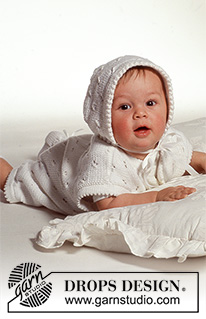





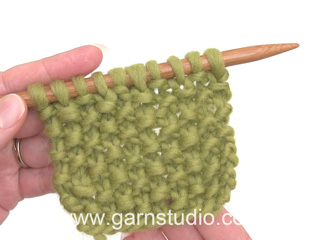

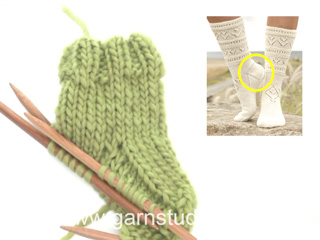
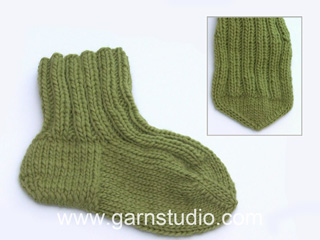
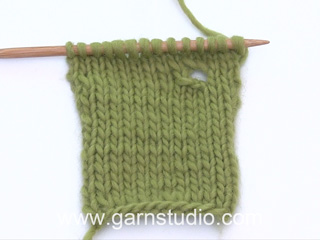
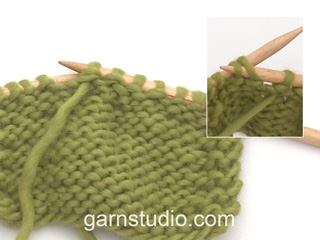
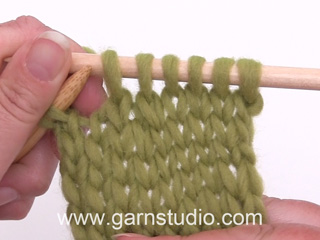

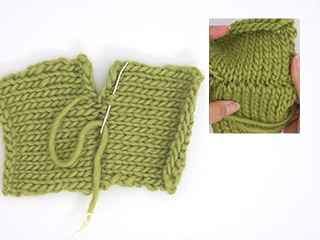
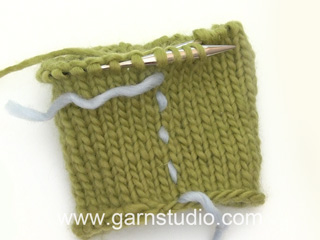

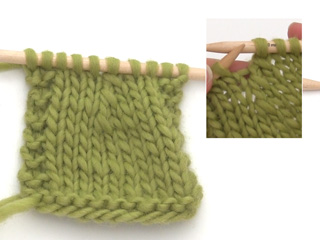

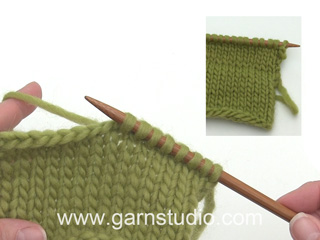



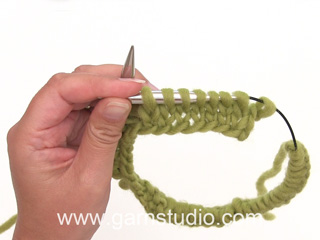
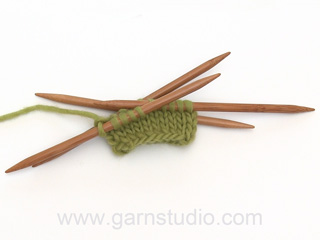




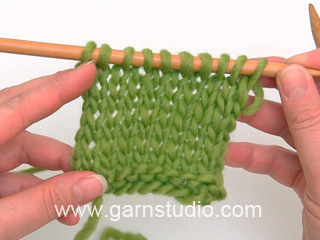



















Comments / Questions (25)
Wie wird Blende am linken Vorderteil und am Vorderteil der Beine gestrickt? Perlmuster oder wie die Kante?
25.10.2024 - 21:55DROPS Design answered:
Liebe Elli, die Blenden werden wie die Beine gestrickt, dh 2 cm glatt rechts, dann die nächste Hinreihe mit (2 M re zs, 1 Umschlag), dann 2 cm glatt rechts. Siehe auch unter Zusammennähen. Viel Spaß beim Stricken!
28.10.2024 - 08:00Bonjour, Merci pour tous ces beaux modèles que vous nous offrez. Pour celui-ci, je me retrouve avec la même question que Nadine. Quelle est la bonne longueur 35 ou 36 cm pour les devants droite et gauche ? Dans l’attente de votre réponse, Bien cordialement, Suzanne
19.04.2024 - 19:02DROPS Design answered:
Bonjour Suzanne, on va corriger cela, merci pour votre remarque. La bonne longueur est 36 cm pour les devants droite et gauche. Bon tricot!
20.04.2024 - 09:54Werden die Beine auf der Rundstricknadel gestrickt, oder in Reihen?
26.03.2024 - 20:40DROPS Design answered:
Liebe Frau Becker, Beine werden in Reihen gestrickt, dann am Ende wird man eine Blende am Vorderteil (mit Knopflöcher) und am Rückenteil gestrickt - siehe letzen Absath für Anzug. Viel Spaß beim Stricken!
02.04.2024 - 10:39Sehr schöner Body! War einfach zu stricken, Anleitung sehr gut! Bei den Socken bin ich nicht zurecht gekommen, es fehlen leider Bilder dazu.
04.05.2023 - 14:58Bei den Socken: welches sind die mittleren 12 Maschen? Wie nehme ich 3 Maschen auf ein Mal in einer Reihe, auf beiden Seiten, ab?
04.05.2023 - 14:56DROPS Design answered:
Liebe Gisela, die 12 mittleren Maschen sind die 12 Maschen die nicht gestrickt wurden, als man die Ferse gestrickt hatte (1. Größe). Nehmen Sie so ab: stricken Sie bis 2 M vor den 12 Maschen übrig sind, 2 M rechts zusammen, stricken Sie die 12 Maschen und stricken Sie dann 2 M rechts verschränkt zusamen. Bei der nächsten Runde stricken Sie ohne Abnahmen. Diese 2 Runden stricken Sie noch 2 Mal (= 3 Mal insgesamt x 2 Abnahmen = 6 Maschen abgenommen = 30 M übrig). Viel Spaß beim stricken!
04.05.2023 - 15:53Jeg er ved at strikke str. 3 mdr. men har lige målt modtageren og han er 30 cm fra skulder til lige efter ble. Det kan jeg ikke få til at passe med målene i opskriften?
10.07.2022 - 06:19DROPS Design answered:
Hej Majbrit. Enligt måleskitsen så är delen från skuldern till början av ben 36 cm (43-5-2) så det bör passa bra, du kan ev. välja att göra den lite kortare om du önskar det. Mvh DROPS Design
12.07.2022 - 08:52Ich arbeite gerade an der vorderen Blende. Auf dem Foto sieht man deutlich die doppelte Kante, in der Beschreibung steht aber etwas von Perlmuster? Nach 0,5 cm Knopflöcher arbeiten. Danach geht es nicht weiter??? Wieviele Reihen noch ? Wann soll man abketten? Genauso ist es für den Schritt beschrieben. Ich weiß nicht , wie man da Knöpfe schließen soll.
31.01.2021 - 18:40DROPS Design answered:
Liebe Andrea, wieviele Reihe sind es hängt von Ihrer Maschenprobe, wichtig ist hier die Höhe = 0,5 cm für die Knöpfe - die Kante wird ganz am Anfang erklärt: 2 cm glatt, 1 Reihe für die Kante (= 2 re zs, 1 Umschlag), 2 cm glatt. Vergessen Sie nicht, die Knöpfe nach der Kante noch einmal zu stricken (Kante falten um die Länge anzupassen). Viel Spaß beim stricken!
01.02.2021 - 09:38Ich bin beim vorder/Rückenteil. Dort heißt es dir große 6/9 Monate, man sollte ab der Knopfleiste, wo man beginnt hin und her zu stricken, noch 34 cm stricken. Der Overall wäre dann aber SEHR lang. Kann es sein, daß hier 34 cm ab dem Schritt genesen gemeint sind? Echt schönes Muster, aber die Erklärungen in der Anleitung sind dürftig. Wahrscheinlich, weil es zu den älteren gehört. Danke aber für das Muster.
04.07.2020 - 12:39DROPS Design answered:
Liebe Maïmouna, in die 2. Größe strickt man hin und zurück wenn die Arbeit 34 cm mist, diese 34 cm bestehen aus: 2 cm Bündchen (Bein) + 6 cm bein + 26 cm (bis Armausschnitt) - die 6 Maschen für den Blende wurden nach 17 cm abgekettet (= 2 + 6 + 9 cm). Viel Spaß beim stricken!
06.07.2020 - 08:25Hej Jeg kan ikke finde mønsteret/diagrammet. Skal jeg betale for at få diagrammet tilsendt.? Venlig hilsen Pernille Svold
14.01.2018 - 17:42DROPS Design answered:
Hei Pernille. Alle våre oppskrifter på nettet er gratis. På denne oppskriften vises ikke diagrammet på den danske siden, dette skal vi ordne med engang. Takk for at du gjorde oss oppmerksom på dette. mvh Drops design
17.01.2018 - 08:15The chart M1 shows all stitches are knit but I assumed from photo that the main body of garment is stocking stitch. I have tried all knit stitches but doesn't look right. Please clarify.
10.07.2017 - 13:18DROPS Design answered:
Dear Mrs Hutton, M.1 is worked K from right side, ie in stocking st you will then work K from RS and P from WS (remember holes). Happy knitting!
10.07.2017 - 14:16